Q&A What is Broiling: Best Broiled Chicken, Salmon, Seafood, Steak Recipes
Broiling is a method of cooking where the food is cooked directly under a high high heat source, that is above the food contained in a pan in the oven. Grilling and barbecuing are similar, but traditionally, for these methods, the heat is applied underneath the food. In a professional kitchen a broiler is often referred to as a 'salamander'.
Many ovens have a 'broiler' or 'griller' built into the top of the oven, but many people do not use their broiler very often. A common exception is to use the 'griller' or 'broiler' in the top of the oven to give the food a final surge of heat before serving, to brown the top, to melt cheese or for other purposes. Many mini toaster-ovens are 'broilers', as the heating element is in the top of the oven. Food is grilled from the top rather than from the bottom in these small portable ovens.
In some ways broiling is similar to barbecuing with a lid as it combines an oven with a direct source of heat. But with boiling the heat is applied to the upper surface of the food where the browning effect is more visible and easier to manage. Broiling at high temperature is the fastest conventional way to cook food, without using microwaves.
Many home cooks are missing out on the delights of broiling as they seldom use the broilers built into their ovens. Fish, scallops, chicken and beef steak, cooked under a broiler in a pan, have a nice caramelized crust and a tender juicy interior. Many chefs claim that broiling produces the juiciest and most tender meat and delightful vegetables. Many restaurants regularly use broiling to prepare their dishes. Perhaps this is one reason their food often tastes better or different from home cooked food.
This article is designed to help you discover or re-discover the benefits of broiling. It includes an array of the best ever broiling recipes to try at home for vegetables, chicken, salmon, seafood, beef, pork, lamb and classic broiled steak recipes.
Benefits of Broiling Compared with Frying, Grilling and Barbecuing
► Broiling is a healthier cooking method than frying or barbecuing on a hot plate because less oil and fat are needed to cook the food.
► Some of the fat and oil in the food drips into the boiler pan.
► Broiling is a fast and simple method of cooking using high heat. The food browns on the outside, sealing in the juices on the inside.
► The process of cooking and browning the food is more visible than when the underside of the food is grilled or fried.
► Browning the top of the food to enhance the flavor and appearance of the food or dish is much easier using a broiler.
► The combined effect of the oven and direct heat cooks the food very quickly.
► Browning provides a unique taste to vegetable and fruits, combining the effects of roasting and grilling.
► Broiling is ideal for cooking fragile cuts of meat and delicate fish and seafood. Food generally does not have to be flipped over. The combination of the hot oven and direct heat from above means that the food cooks evenly with minimal handling. Take care to ensure that the food items are the ideal thickness for boiling, so that the food cooks evenly.
Tips for Broiling
There are several ways to ensure your broiler cooking is more reliable and effective:
► The food needs to be just the right thickness for broiling so that the inside is cooked when the outside is browned. Cut larger portions of meat into thinner cuts, or flip over once during the cooking.
► Preheat the broiling oven well before adding the food. Temperatures over 400 degrees F (200 degrees C) are recommended. Modern broilers have a thermostat control. You can always switch the boiler element off and finish the cooking in the oven.
► You need to carefully choose the distance between the heat element and the food. The distance should be between 2-6 inches (5-15 cm) depending on the type and thickness of the food and how long it will take to broil the food. After a few trials, you will learn the ideal distance for your broiler and the food you are cooking.
► In many cases the broiler heat source runs down a band in the middle of the roof of the oven. This means that you will often need to rotate and adjust the position of the pan during the cooking to ensure the food is cooked evenly.
► Don’t use glass or ceramic dishes in your broiler, as they can easily when the juices drip into the pan. A metal roasting pan works well. Disposable aluminium roasting pans are a good choice as the thicker once can be used several times before disposing of them.
► Broiling pans are very hard to clean and so it is wise to line them with aluminium foil.
► Use a heavy skillet as a broiler for thin food items and those that cook very quickly. The underside of the food may not get hot enough to cook when the food is suspended a grill over a broiler pan. Preheat the pan before adding the food. Try not to overload the broiler grill and pan because there may be poor circulation of air under the food.
► The best broiler pans are enameled cast-iron, cast-iron or heavy-duty steel rather than stainless steel. Heavy black pans heat more evenly and quickly.
► Leaving the oven door open just a tiny amount helps allow steam to escape. It can also mean that the broiler and oven heating elements stay on right through the 10 minutes or so required to cook the food. If the elements switch off, it is much harder to know when the food is cooked properly and the food takes longer to cook.
► For one-inch thick steaks about 1-inch (3 cm) thick (rib-eye or sirloin are best), have the meat at room temperature before broiling and dry the steaks well before cooking. Broil the steaks in a preheated skillet about 8 minutes for medium rare; 10 minutes for well-done without turning.
► For one-inch fish pieces about 1-inch (3 cm) thick, brush the fish lightly with rice bran or grape seed oil. Cooking on a grill over a pan for 3-8 minutes, without turning. The top of the fish will brown nicely if the broiler is close enough to the element.
► Very fish fillets, such as flounder, are best broiled in a pre-heated heavy metal pan for 1-3 minutes.
► Skinless and boneless chicken breasts generally take 5-6 minutes, or less if the pieces are thin. Chicken thighs and legs take about 10 minutes. Adjust the rack position to brown the chicken in the same time it takes to cook the center of the pieces. Switch the broiler element and finish the cooking in the oven if the chicken browns too quickly.
► Brush scallops, shrimp and other seafood with oil and sprinkle with salt before broiling for about 2-3 minutes.
Best Broiling Recipes
Broiled Chicken Thighs Recipe with Olives, Oranges and Fennel
Ingredients
- Salt to taste
- 8 chicken thighs, bone-in
- Freshly ground black pepper
- 1 bulb fennel, finely sliced
- 1 small red onion, finely sliced
- 2 tablespoon garlic, finely chopped
- 3 tablespoons extra-virgin olive oil
- 2/3 cup green olives, pitted and halved
- 1 tablespoon hot pepper or chilli, finely chopped
- 1 orange, unpeeled and sliced into eight segments
Method
Heat the broiler to a high setting for 10-15 minutes. Combine the fennel, garlic, chilli, onion, olives with 2 tablespoons of olive oil in a large bowl. Sprinkle with salt and freshly ground black pepper and toss to mix. Spread this mixture in a thin layer over a 9 x 12 inch (20-25 cm) heavy baking dish or disposable aluminium foil pan. Scatter the 8 orange sections on top. Place the chicken, and other tablespoon into the large bowl that was used previously. Sprinkle with salt and freshly ground black pepper, and mix to coat. Place the thighs on top of the fennel and orange mixture with the skin side down. Position the broiler pan so that it is 4-5 inches (10-13 cm) beneath the broiler flame or element. Broil for about 10 minutes, rotating the pan after 5 minutes. Turn the chicken pieces over so the skin side is up, and stir the other ingredients. Broil the chicken skin, rotating every 3 minutes until the skin is brown and crisp and the chicken is cooked in the center (generally 5-8 minutes). Serve hot with potatoes or couscous and fresh bread.
Broiled Non-Starchy Vegetables Recipe
Ingredients
- Salt
- Olive oil
- Freshly ground black pepper to taste
- Various quick-cooking vegetables such as: cauliflower, broccoli, bell peppers, onions, cabbage spinach
- Fresh herbs for serving
Method
Pre-heat your broiler on high. Set the rack for the broiler about 4-5 inches (10-12 cm) below the broiler flame or element. Slice all the vegetables into fairly large chunks. Cut the onions, bell pepper and cabbage can be cut into wedges or medium size pieces. Divide the broccoli and cauliflower into small florets. Toss all the sliced vegetables with olive oil and sprinkle with salt and pepper. Ensure that all surfaces are evenly coated with oil, Spread the vegetables out on a sheet pan, broiling pan or heavy oven-proof skillet. Broil the vegetables for 5 minutes and then flip and stir and broil for another 5 minutes. Repeat this process until all the vegetables are starting to brown and are evenly cooked. Start to char the edges of the vegetables if you like as this boost the flavor. Generally the vegetables will be cooked in 20-25 minutes. Serve hot with fresh herbs.
Broiled Squash, Bell Pepper and Zucchini Recipe
Ingredients
- 1/2 cup red onion, finely chopped
- 1 1/2 tablespoons balsamic vinegar
- 3 tablespoons extra virgin olive oil
- 1 clove of garlic clove, finely chopped
- 3 tablespoons thinly sliced fresh basil
- 1 medium-size zucchini, cut lengthwise and then sliced
- 1 yellow summer squash, cut lengthwise and then sliced
- 2 red bell peppers, quartered lengthwise and cut into medium-size pieces
Method
Combine the garlic, 2 tablespoons of olive oil, balsamic vinegar in a small bowl and season with salt and pepper to taste. Pre-heat your broiler on a high setting. Toss the yellow squash, zucchini and bell peppers with half of prepared balsamic vinegar dressing in a large bowl and set aside for 5 minutes. Put the vegetables on a sheet pan, broiler pan or on a heavy skillet. Do in two batches to avoid crowding the pan. Position the rack so that the vegetables are about 4-5 inches (10-12 cm) below the broiler flame. Broil the vegetables until golden brown and tender, turning once of twice (generally about 15-20 minutes). Fry the onions in a separate pan and add to the cooked vegetables. Serve hot with fresh herbs and broiled meat.
Broiled Sliced Potatoes Recipe
Ingredients
- Salt to taste
- Cooking spray
- Freshly ground black pepper to taste
- 1 large potato (per person), cut into medium thick slices
Method
Preheat your broiler on a moderate to high setting. Place the slices on a pan sheet and spray with oil, and sprinkle with salt and pepper, stirring to cover all surfaces with a light spray of oil. Broil for about 5-8 minutes (until slightly golden). Then, flip each slice over, and cook on the other side for about 5-8 minutes. Serve hot when the potatoes are cooked on the inside and brown and crisp on the outside.
Broiled Salmon With Miso Recipe
Ingredients
- 1 teaspoon canola oil
- 2 thick salmon fillets
- 2 teaspoons miso paste
- 1/4 teaspoon freshly ground black pepper
Method
Preheat the broiler with a high setting. Place a baking sheet or broiler pan on a rack about 6-8 inches (15 - 20 cm) below heat source. Dry the salmon fillets with paper towels. Then, season with freshly ground black pepper on both sides. Remove the pre-heated sheet from the oven and lightly apply some canola oil to it. Place the salmon fillets on the baking sheet and spread a very thin layer of miso over the upper surface of the fillets. Broil until the salmon fillets until just cooked in the thickest part (generally about 6-8 minutes). Serve hot topped with fresh herbs.
Spicy Broiled Chicken Breasts Recipe
Ingredients
- 1/2 teaspoon salt
- 1 teaspoon ground cardamom
- 1 teaspoon ground coriander
- 2 teaspoons fresh lime juice
- 2 cloves garlic,finely chopped
- 1/2 teaspoon red pepper flakes
- 2 teaspoons rice bran or grape seed oil
- 1/2 cup chicken broth, at room temperature
- 2 boneless, chicken breast halves with the skin removed
Method
Preheat your broiler to moderate-high heat. Position the oven rack about 10-12 inches (25-30 cm) below the broiler flame or element. Prep all the ingredients. Combine the vegetable oil, lime juice, salt, red pepper flakes, garlic, coriander and cardamom in a medium-size bowl and mix well. Place the chicken breasts in small heavy metal roasting or broiling pan. Rub the spice mix all over the chicken. Place the pan under the broiler and cook the chicken for 8-10 minutes. Then, flip the chicken pieces over and broil them for another 4 minutes. Remove the pan and carefully pour the chicken broth into the pan around the chicken breast pieces. Return the pan to the oven and cook for 4-6 minutes. Serve the chicken after resting for 5 minutes.
Broiled Steak Recipe
Ingredients
- Olive oil
- Salt to taste
- Freshly ground black pepper
- 2 tender steaks (about 1 inch (3 cm) thick
Method
Pre-heat your broiler on a high setting and set a heavy skillet on a rack about 6 inches (15 cm) below the broiler flame or element. Rub the steaks with olive oil, and sprinkle with salt and coarsely ground pepper. Place the steaks on the pre-heated skillet. Return to the oven and broil the steaks for about 3 minutes for each side. The lower the oven temperature and cook for another 4-5 minutes until cooked to your preference. Remove the steaks from the oven and allow to rest for 5 minutes before serving.
Broiled Lamb Chops Recipe with Mint and Rosemary Sauce
Ingredients
- 1 teaspoon salt
- 4-6 loin lamb chops
- 2 teaspoons olive oil
- 2 large cloves of garlic
- 3 tablespoons mint jelly
- 3 tablespoons white wine vinegar
- 1 teaspoon freshly ground black pepper
- 1 teaspoon fresh rosemary, finely chopped or 1/2 teaspoon dried rosemary
Method
Finely chop the garlic cloves. Add salt and pepper and use the flat side of a knife blade to mash the garlic into a paste. Transfer the paste to a bowl, add the olive oil and mix well. Rub the garlic paste mixture over both sides of lamb chops and set aside for 10-15 minutes. Make the sauce by adding the rosemary to 3 tablespoons white wine vinegar and 3 tablespoons mint jelly in small saucepan. Bring the mixture to the boil, stirring to dissolve the mint jelly, and then simmer for 2-3 minutes. Preheat the broiler using a high setting. Broil the lamb chops with the rack set about 4 inches (12 cm) below the broiler flame or element, until well browned on the outside, but still pink inside (generally about 4 minutes per side). Serve the lamb chops immediately with the mint and rosemary sauce.
Broiled Pork Chops Recipe
\Ingredients
- 1 teaspoon salt
- 1/2 teaspoon paprika
- 2 tablespoons of ketchup
- 2 teaspoons brown sugar
- 6 thick, lean pork chops
- 2 tablespoons white vinegar
- 1 tablespoon Worcestershire sauce
- 1/4 teaspoon freshly ground black pepper
- 1/2 teaspoon chilli powder (or fresh chilli, finely chopped)
Method
Add the black pepper, chilli , paprika, salt, brown sugar, Worcestershire sauce, vinegar, water and ketchup to a medium-size saucepan. Mix and then bring the mixture to a boil, and then reduce to a simmer and cook for 5-7 minutes, stirring frequently. Preheat the broiler on a moderate to high setting. Dry the chops with paper towels and then brush both sides of the chops with about half of the sauce. Place the chops on the broiling pan rack set about 4 inches (12 cm) below the broiler flame or element. Broil for about 4 minutes on one side. Flip the chops over and brush with more sauce. Broil for another 4-6 minutes until the chops are brown on the outside and cooked in the center. Serve with the remaining sauce.
Broiled Scallops Recipe
Ingredients
- 1 tablespoon garlic salt
- 2 tablespoons lemon juice
- 2 tablespoons butter, melted
- 1 1/2 pounds (750 g) fresh scallops
- 1 teaspoon of freshly ground white pepper
Method
Rinse the scallops and place in a shallow heavy baking pan, broiling pan or skillet. Pour the melted butter and lemon juice over the scallops and sprinkle with garlic salt and pepper. Broil the scallops for 3-5 minutes until the scallops are golden brown on top. Serve hot topped with fresh herbs and a little extra melted butter.
Broiled Tiger Shrimp with Garlic and Lemon
Ingredients
- 1 cup butter
- 1 1/2 tablespoons lemon juice
- 1/4 cup Parmesan cheese, grated
- 2 teaspoons of garlic, finely chopped
- 1 1/2 lb (750 g) tiger shrimp, peeled and veins removed
Method
Preheat your broiler to medium-high. Using a sharp knife, butterfly the prawns to flatten them. Arrange the prawns in a broiler pan. Melt the butter in a small pan and add the garlic and lemon juice. Use about 1/4 of the butter mixture to brush over the prawns. Sprinkle Parmesan cheese over the prawns. Position the broiler pan about 4 inches (12 cm) below the broiler flame and element and broil prawns for 3-4 minutes or until just cooked. Serve with the remaining butter mixture as a dipping sauce.
Images for Recipes
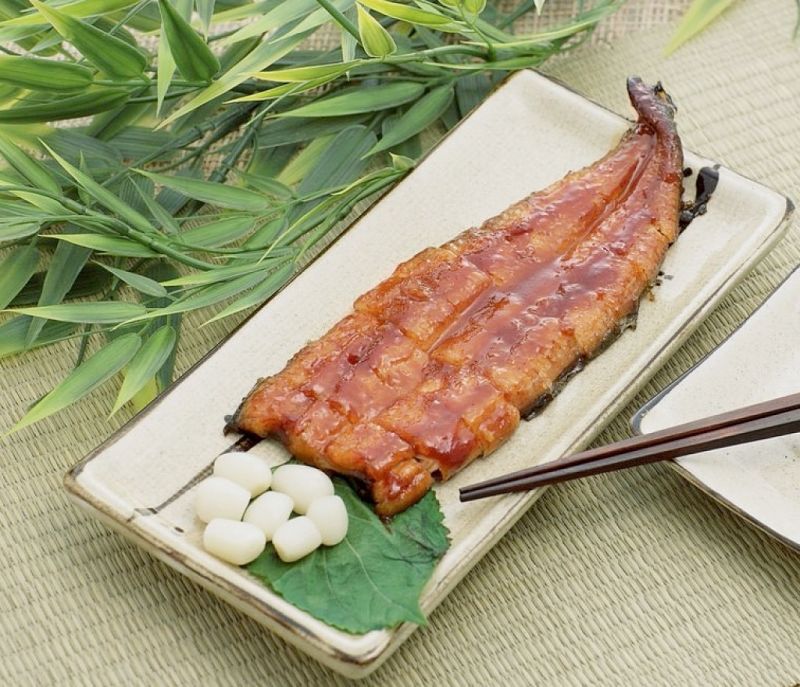
Broiled fish and seafood is a delight as the top is nicely browned and excess fat drips into the pan Source: Korean Culture and Information
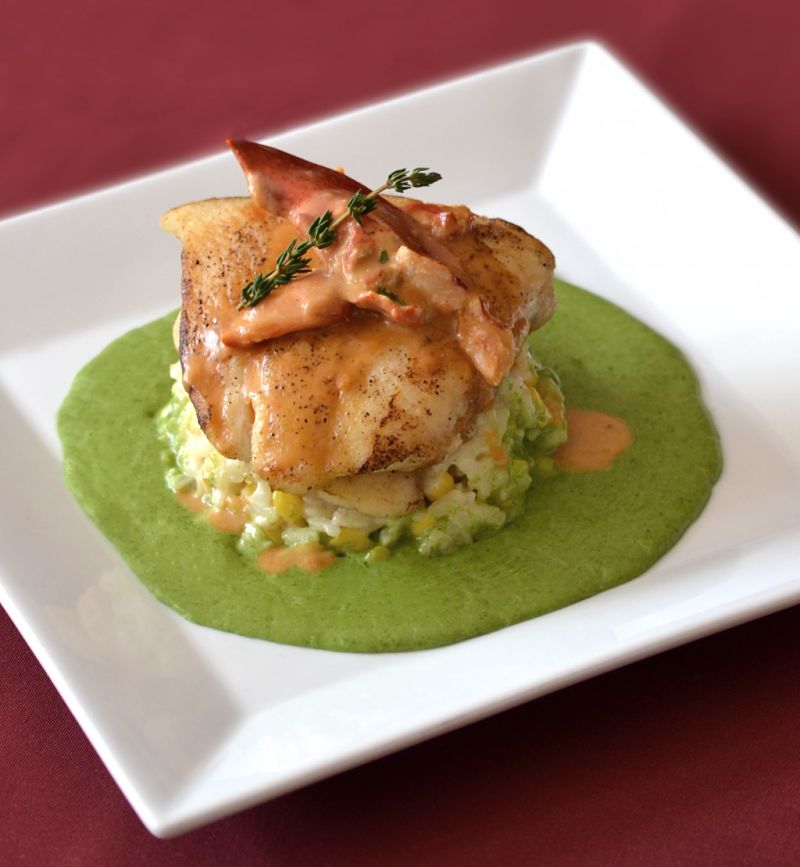
Broiled fish with a tangy and spicy sauce is easy to make at home using the tips and recipe provided
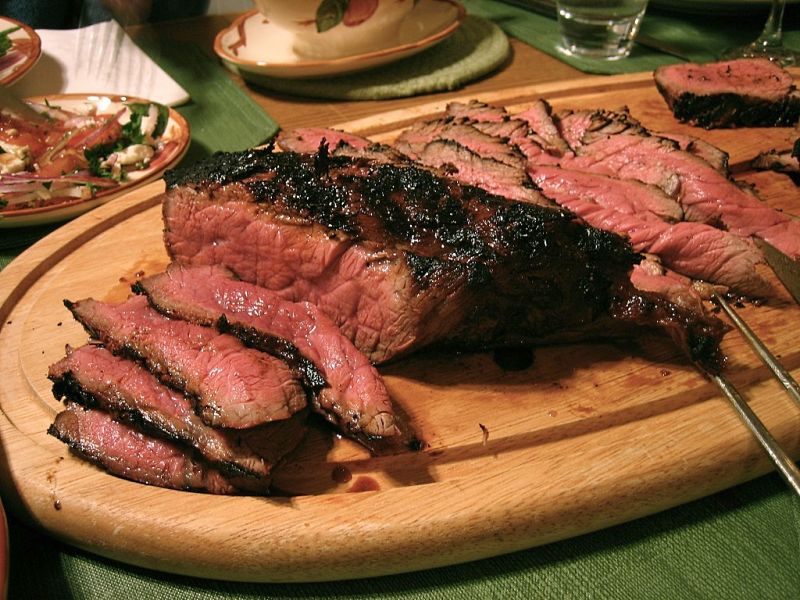
London broiled steak is tender on the inside and charred on the outside. Broiling is a perfect way to cook a fine cut of beef.
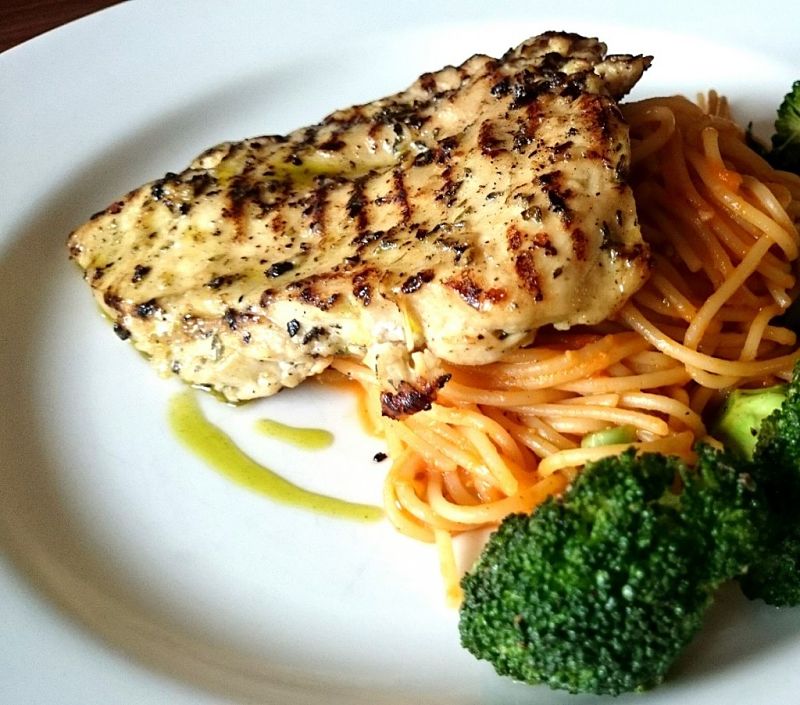
Broiled chicken is moist and tender. Discover how to broil chicken to perfection
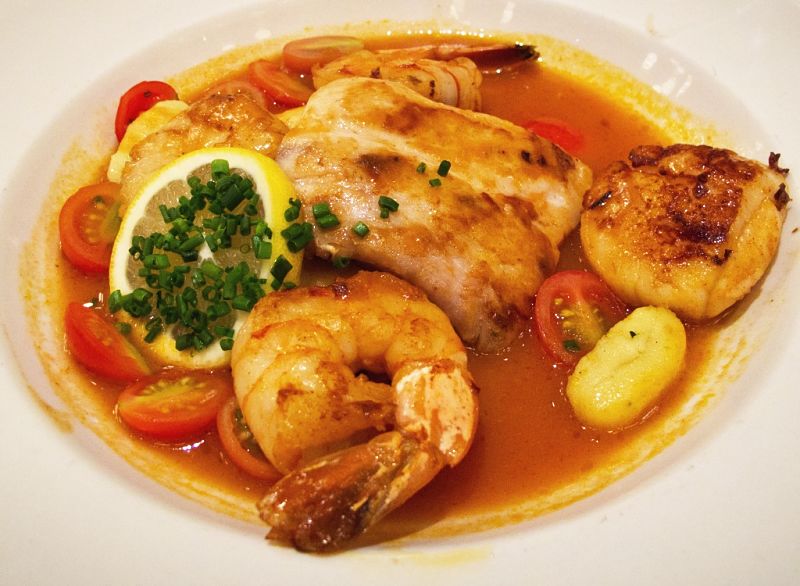
Broiling is an ideal method for cooking all types of seafood, especially fish, shrimp and scallops. Discover how here